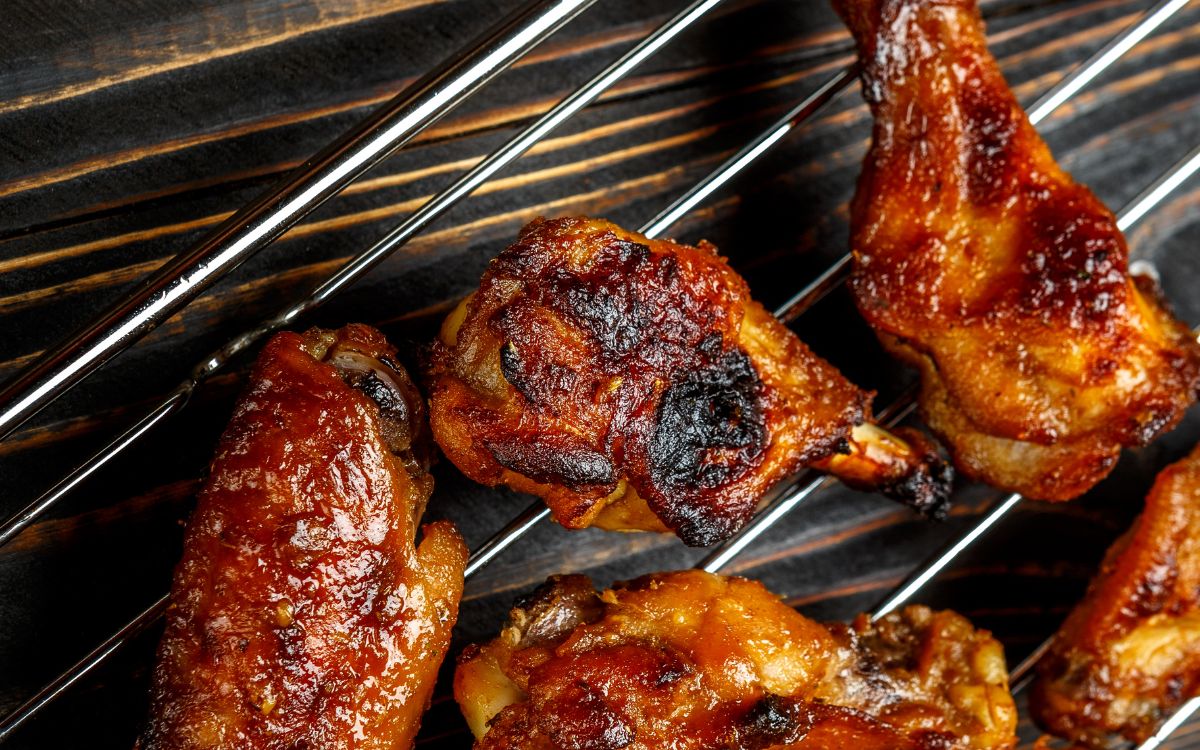There’s something truly special about firing up the grill and preparing delicious meals in the great outdoors. Whether you’re a seasoned grill master or a novice looking to explore the art of outdoor cooking, this blog post is here to guide you on your journey to mastering the grill.

From understanding the different types of grills to learning essential techniques and tips, we’ll cover everything you need to know to elevate your outdoor cooking game. So grab your apron, gather your ingredients, and let’s dive into the wonderful world of mastering the grill.
Choosing the Right Grill
When it comes to mastering the art of outdoor cooking, one of the first decisions you’ll need to make is choosing the right grill. With a wide variety of options available in the market, it’s important to understand the features and advantages of each type of grill to make an informed choice that suits your needs and preferences.
Gas Grills
Gas grills are popular for their convenience and ease of use. They offer precise temperature control and quick heating, making them ideal for those who value speed and efficiency in their grilling process. Gas grills also come with additional features such as multiple burners, side burners, and built-in thermometers, providing versatility and enhancing your cooking experience. With proper care and maintenance, a gas grill can last for many years, making it a worthy investment for outdoor cooking enthusiasts.
Charcoal Grills
For those who appreciate the traditional smoky flavor and the joy of charcoal grilling, a charcoal grill is an excellent choice. These grills provide an authentic grilling experience, allowing you to experiment with different charcoal types and wood chips for enhanced flavors. Charcoal grills require a bit more patience and skill to get the fire started and maintain the right temperature, but the results are often worth it. The ability to adjust the heat by moving the charcoal around and controlling the airflow gives you greater control over the cooking process.
Pellet Grills
If you’re a fan of low and slow cooking, a pellet grill might be the perfect match for you. These grills use wood pellets as fuel, providing a distinct smoky flavor to your dishes. Pellet grills offer precise temperature control through an automated system that feeds the pellets into the fire, making them incredibly convenient to use. They are versatile and allow you to smoke, grill, bake, roast, and even barbecue. While pellet grills tend to be pricier than other options, their versatility and ease of use make them a favorite among barbecue enthusiasts.
Electric Grills
For those who live in apartments or have limited outdoor space, electric grills provide a practical solution. These grills are compact, easy to use, and require no fuel other than electricity. They heat up quickly and offer consistent temperature control, making them a suitable option for quick grilling sessions. While electric grills may not provide the same level of smoky flavor as charcoal or pellet grills, they are a convenient and efficient choice for those looking to enjoy outdoor cooking in limited spaces.
Essential Grilling Techniques
To truly master the art of outdoor cooking, it’s essential to familiarize yourself with some fundamental grilling techniques. These techniques will help you achieve the perfect balance of flavors, textures, and doneness in your grilled dishes. Whether you’re a beginner or an experienced grill enthusiast, mastering these techniques will elevate your outdoor cooking game to new heights.
Preparing the Grill
Before diving into the cooking process, it’s crucial to prepare your grill properly. This involves cleaning and maintenance to ensure optimal performance and food safety. Regularly removing grease and residue from the grill grates and other surfaces will prevent flare-ups and unwanted flavors. Additionally, preheating the grill allows it to reach the desired cooking temperature, ensuring even heat distribution and efficient cooking.
Direct vs. Indirect Heat
Understanding the difference between direct and indirect heat is key to achieving the desired results in your grilling endeavors. Direct heat refers to cooking food directly over the heat source, providing a quick sear and grill marks. This method is suitable for thinner cuts of meat or when you want a charred exterior. On the other hand, indirect heat involves cooking food next to, but not directly over, the heat source. This allows for slower, more even cooking, making it ideal for thicker cuts or delicate foods that require gentle heat.
Smoking Techniques
Smoking adds a whole new dimension of flavor to your grilled dishes. By using wood chips or chunks, you can infuse your food with delicious smoky notes. Understanding the various types of wood and their flavors is crucial for achieving the desired taste profile. Controlling the amount of smoke and maintaining consistent temperatures throughout the smoking process will help you achieve perfectly smoky and tender results.
Marinating and Seasoning
Marinating and seasoning are essential steps to enhance the flavor and tenderness of your grilled meats and vegetables. Marinating involves soaking the food in a mixture of ingredients to add moisture, tenderness, and flavor. Seasoning, on the other hand, involves applying dry rubs or spices to the food just before grilling to enhance its taste. Experimenting with different marinades and seasonings will allow you to create unique flavor profiles and personalize your dishes.
Grilling Techniques for Different Foods
Different types of food require different grilling techniques to achieve optimal results. Understanding the nuances of grilling various foods will help you cook them to perfection. Whether you’re grilling steaks and burgers, poultry and seafood, or vegetables and fruits, each category has its own considerations. From achieving the perfect grill marks on steaks to avoiding dryness in poultry, understanding the specific techniques and cooking times for different foods is essential for creating mouthwatering grilled masterpieces.
Advanced Grilling Techniques
Once you have mastered the essential grilling techniques, it’s time to level up your outdoor cooking skills with some advanced techniques. These techniques will allow you to expand your repertoire and create impressive dishes that will impress your family and friends. Get ready to take your grilling game to the next level with these advanced techniques.
Searing
Searing is a technique used to create a caramelized crust on the exterior of meats, adding depth of flavor and texture. Achieving a perfect sear requires high heat and a short cooking time. By searing your steaks, chops, or other cuts of meat at the beginning or end of the cooking process, you can enhance the overall taste and presentation of your dish. Mastering the art of searing will elevate your grilled meats to a whole new level.
Reverse Searing
Reverse searing is a technique that involves cooking meats low and slow before finishing them with a high-temperature sear. This method ensures that the meat is evenly cooked throughout, resulting in a tender and juicy interior with a beautifully caramelized exterior. By using a two-step process of indirect heat followed by direct heat, you can achieve perfectly cooked meats with a mouthwatering crust.
Rotisserie Grilling
Rotisserie grilling adds a touch of drama and flavor to your outdoor cooking experience. This technique involves skewering meat, such as whole chickens or roasts, and slowly rotating them over a heat source. The rotation allows for even cooking and basting as the meat juices continually self-baste. Rotisserie grilling creates succulent, juicy meats with a crisp and flavorful exterior, making it a favorite technique for special occasions and gatherings.
Plank Grilling
Plank grilling is a technique that involves cooking food, particularly seafood, on a wooden plank placed directly on the grill grates. The wooden plank imparts a subtle smoky flavor to the food while also protecting it from direct heat. This method is especially popular for grilling salmon, but it can also be used for other delicate seafood and even vegetables. Plank grilling adds an extra layer of complexity and taste to your dishes.
Grilling with Cast Iron
Grilling with cast iron brings its unique set of benefits and flavors to your outdoor cooking. Cast iron retains and distributes heat evenly, allowing for consistent cooking temperatures and excellent searing capabilities. The natural non-stick properties of seasoned cast iron make it ideal for grilling delicate foods like fish and vegetables. By using cast iron grates or skillets on your grill, you can achieve impressive grill marks and enhance the flavors of your grilled creations.
Grilling Safety and Maintenance
Grilling safety and proper maintenance are essential aspects of outdoor cooking that should never be overlooked. By following safety guidelines and implementing a regular maintenance routine, you can ensure a safe and enjoyable grilling experience every time. Let’s delve into the important considerations for grilling safety and maintaining your grill.
Grill Safety Tips
Ensuring the safety of yourself, your loved ones, and your surroundings is of utmost importance when grilling. Positioning your grill in a safe location away from flammable materials, such as overhanging branches or wooden structures, is crucial. Implementing fire safety measures, such as having a fire extinguisher nearby and keeping a close eye on the grill while in use, will help prevent accidents. Proper handling of propane tanks and adhering to food safety guidelines, such as avoiding cross-contamination and cooking food to safe temperatures, are also vital aspects of grilling safely.
Cleaning and Maintenance
Regular cleaning and maintenance of your grill will not only prolong its lifespan but also ensure optimal performance. Establishing a cleaning routine that includes cleaning the grill grates, removing grease and debris, and wiping down the exterior surfaces is essential. Deep cleaning the grill periodically, including cleaning the burner tubes, inspecting the gas lines, and unclogging any blockages, will prevent malfunction and potential hazards. Additionally, maintaining the grill’s components, such as replacing worn-out parts and checking for gas leaks, will help keep your grill in excellent working condition.
Storing Your Grill
Properly storing your grill during periods of non-use or inclement weather is crucial for its longevity. Winterizing your grill, especially in colder climates, involves cleaning it thoroughly, removing any propane tanks, and protecting it from the elements. Wrapping the grill with a suitable cover and storing it in a dry and secure location will help prevent rust, corrosion, and damage. By taking the necessary steps to store your grill correctly, you can ensure that it will be ready for use when the grilling season resumes.
Conclusion
From understanding the different types of grills and their advantages to mastering the art of temperature control, marinating, and grilling times, you’re well on your way to becoming a true grill master. Remember, practice makes perfect, so don’t be afraid to experiment with different recipes and techniques to find your own unique grilling style. And most importantly, have fun with it! Outdoor cooking is not just about preparing delicious meals; it’s also about creating memorable experiences with family and friends.









